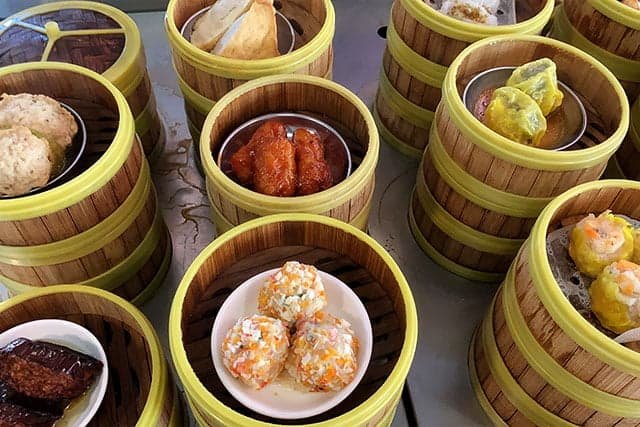There are few delights in Malaysian cuisine that compare to the delicacy of freshly prepared dim sum and tea while in the presence of family and friends. In our last post, we looked at the traditions of Nyonya cuisine and how southern Chinese cooking techniques have contributed to Malaysia’s culinary identity. Cantonese Dim Sum is one of the many dishes that have been brought over to Malaysia.
Dim sum was quickly adapted to the local halal cooking practices and its variations have now become a part of everyday Malaysian food culture, with Malaysians being well acquainted with the wide selection of dim sum dishes. For those not familiar with dim sum, this guide was created to help break down the origins of dim sum, outline some of the most popular types of dishes and how to eat them.
What is Dim Sum?
Dim Sum is a term used to describe a collection of snack-sized dishes usually served on small plates and accompanied with tea. Dim sum translates as “A little touch of heart” which is said to describe the food’s pleasant flavours and comforting texture. When referring to Dim Sum, the phrase “yum cha” which means “let’s drink tea” is also used to reference how Dim Sum was traditionally accompanied with tea when it was invented in 19th century Guangzhou tearooms. Consuming Dim Sum is a very social occasion with many people ordering and sharing multiple dishes together at one table. This is why Dim Sum is such an exciting dish to enjoy!
The History of Dim Sum
Dim sum developed in the 19th-century tea houses of China’s Guangdong province. This southern coastal province was frequented by silk road traders who would often stop for refreshments and rest on their travels. Tea was said to promote good digestion so tea houses started to serve small bite-size snacks to give the traders strength for their trips. Ever since tea and Dim Sum have been served together giving way to the phrase “yum cha” or “to drink tea”.
Dim Sum in Malaysia
The history of Dim Sum in Malaysia is deeply rooted in a time when the country’s own food culture was being established. From the 17th century onwards, the migration of southern Chinese citizens from Fujian, Canton and Guangdong brought new techniques and approaches which eventually combined with traditional Malay cooking forming what we know as Nyonya. Dim sum was among many of the Canton (now Guangzhou) traditions that were adopted by the local populace. Some of the most classic dishes include:
Char Siu Bao
Char Siu Bao is a traditional fluffy Cantonese bun stuffed with BBQ pork. These are an irresistible favourite owing to the softness of the steamed bun paired with BBQ pork which is cooked with a sweet aromatic sauce containing sugar, water, salt and fermented soybean paste. We also developed a vegetarian version of this bao under our PA brand using vegetarian meat which you can find here.
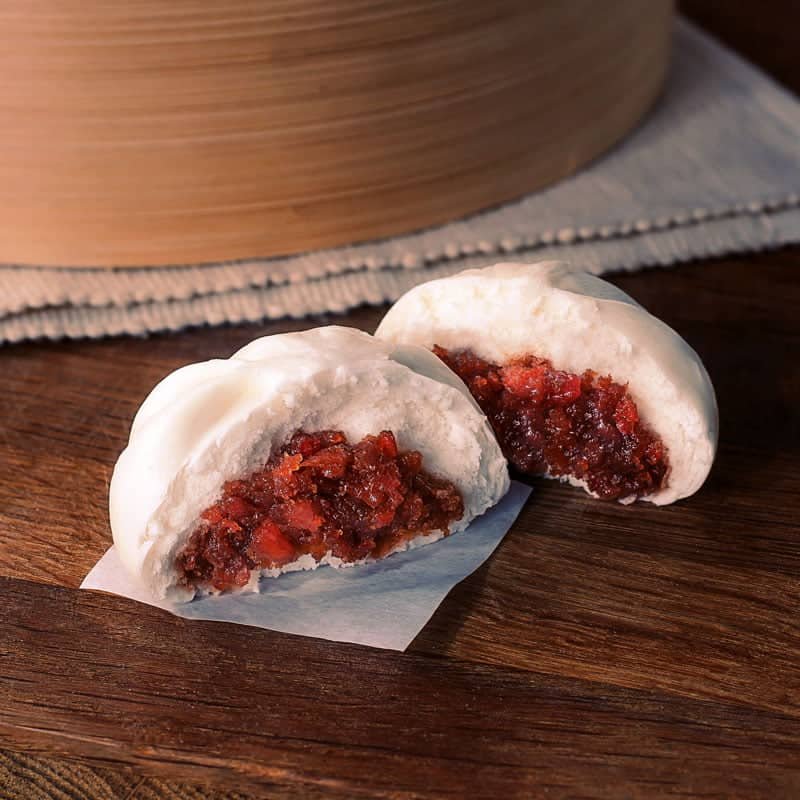
Sesame Ball (Jian Dui)
One of the best starter dishes, Jian Dui is a universal favourite at nearly all Dim Sum feasts because they’re easy, fun and accessible to everyone regardless of taste preference. These sticky rice flour dough balls are injected with sweet red bean paste before being rolled in sesame seeds and fried until crispy. Jian Dui are commonly served as golf ball-sized snacks but are sometimes made up to 10” in diameter! You can find details on our range of PA Sesame Balls here.
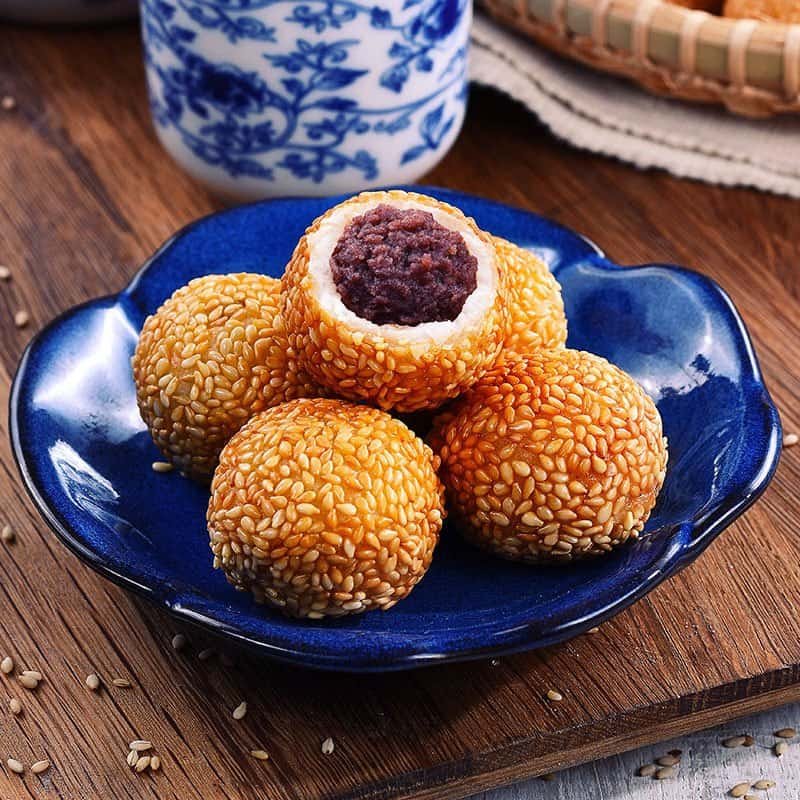
Har Gao
Har Gou is essentially steamed shrimp dumplings made with a wheat and tapioca starch casing. When steamed, it gives the Har Gou a beautifully translucent skin, earning it the title of “crystal shrimp dumplings”. The beauty of Har Gou is how the steaming process boils the shrimp filing in its own juices inside of the dumpling skin. When you take a bite, the dumpling pops with an explosion of juicy flavour. Be sure to make use of a light soy and fish sauce for dipping!
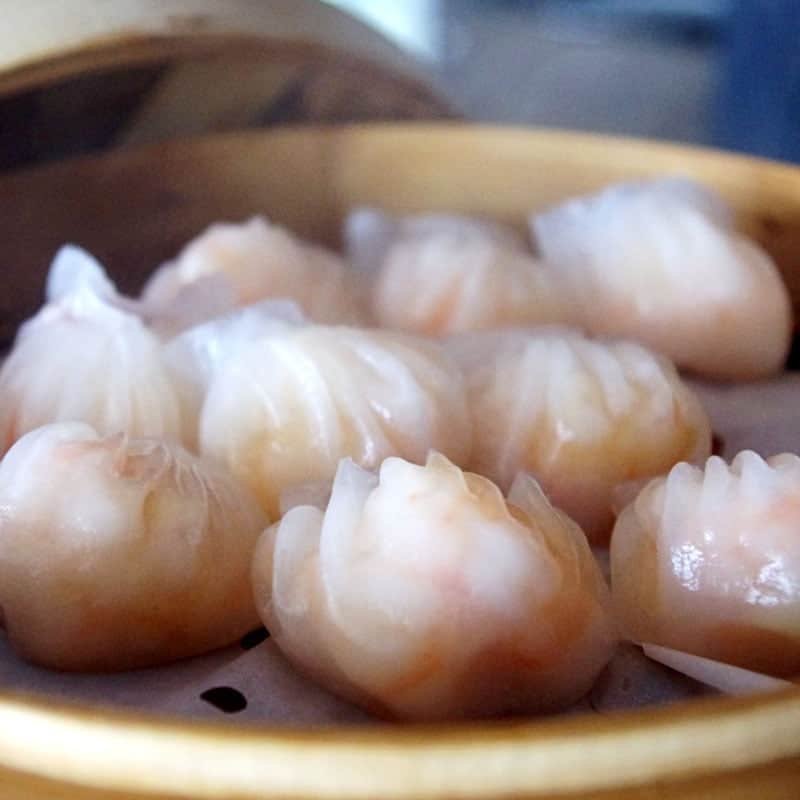
Cheung Fun
Chueng Fun is a steamed rice noodle roll that can contain anything from shrimp, char siu, tofu, fried dough, bean sprouts and vegetables. Made from thick rice flower sheets rolled around the filling, Chueng Fun is often dipped in soy sauce and covered with sesame seeds for added nutty flavours. It’s a versatile dish with a soft chewy texture that feels great while eating. These are sometimes served as smaller whole rolls, or larger ones cut into slices.
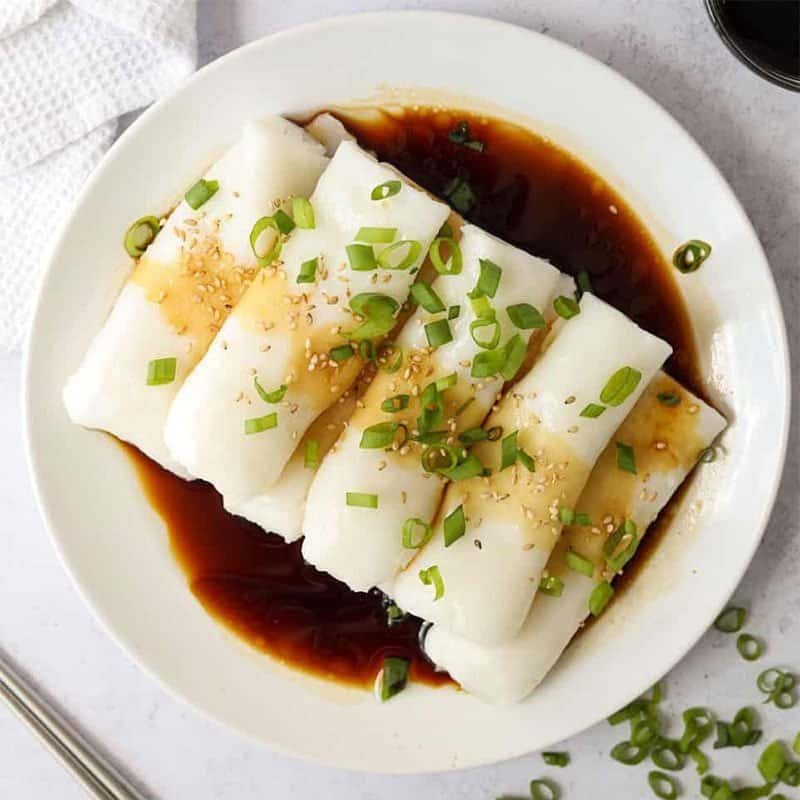
Loh Mai Gai
Loh Mai Gai is a Guandongese dish consisting of sticky glutinous rice topped with chicken, mushroom and Chinese sausage served in a compact bundle. Often, the rice will be cooked in chicken broth so that when the dish is steamed all the flavours intermingle and infuse. In Malaysia, we have our own way of making loh mai gai which is to add in the chicken and mushroom followed by the rice. After steaming the dish in the bowl and then serving, the chicken and mushroom are visible at the top of the dish.
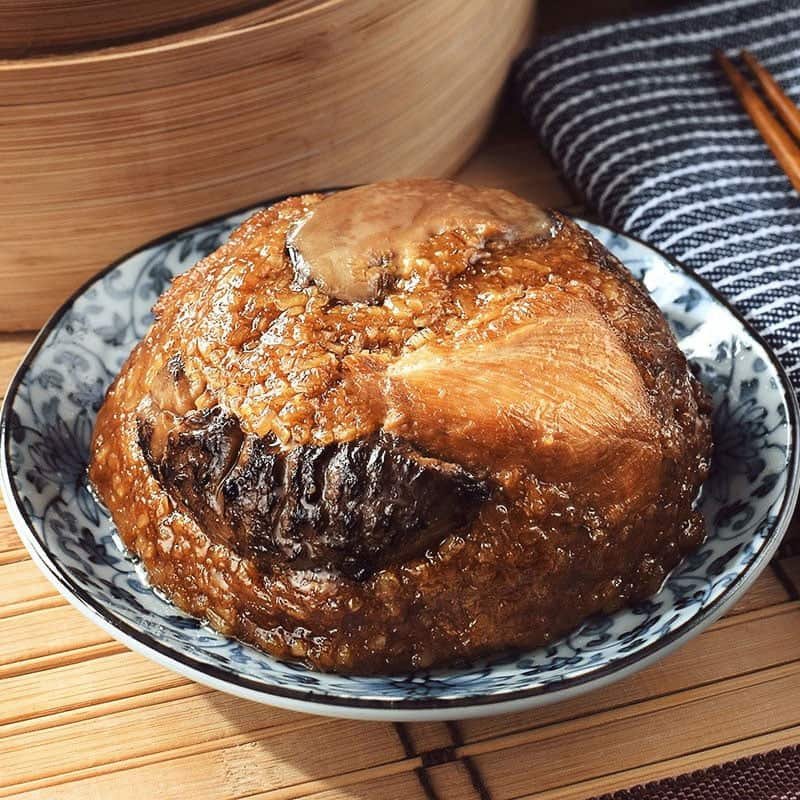
Shumai
Shumai is another popular steamed dumpling Dim Sum consisting of a prawn and minced pork filling that pokes out of a chewy pastry wrapper. The top is then garnished with finely chopped carrots giving Shumai their signature appearance. Shumai is often encased within an egg-based wonton wrapper which is thicker and chewier than rice flour dough. At PA Food we’ve created a line of fresh mouth-watering Shumai products including seafood, mushroom chicken, black pepper chicken and original chicken.

The Best Tea to Drink with Dim Sum
Tea and Dim Sum have gone hand in hand for hundreds of years and it’s impossible to enjoy the true Dim Sum experience unless your dishes are accompanied with freshly brewed tea. After all, tea acts as a digestion aid for the rich Dim Sum while providing comfort and refreshment. When arriving at a Dim Sum restaurant, you will often be served a tea before choosing your Dim Sum. Those new to traditional Dim Sum or the concept of “yum cha” might not know that there are many different types of tea available. With a range of different tastes and flavours from dark to light, heavy to floral, different teas can be used strategically to complement certain dim sum dishes!
White Tea (Shomei)
White tea is a mild and gentler option with sweet and bitter notes. If you want a light refreshing tea with minimal depth then white tea is a great option to pair with lighter dishes that contain seafood or fish. Due to its pale off amber colour, white tea has a very delicate flavour profile and should not be consumed with spicey or dark meat dim sum dishes as these will overwhelm the tea.
Yellow Tea
Yellow tea produces a beautiful golden hue and contains distinct floral notes which come from the combination of Jasmine and Chrysanthemum petals. Yellow tea is slightly stronger than white tea and carries a sweeter flavour which means it can be paired to complement lighter Dim Sum dishes and also desserts such as Ma Lai Go or even our own mantou buns.
Green Tea
Green tea is one of the most popular options at dim sum dining tables and in living rooms around the world. It’s an accessible flavour profile with fresh grassy notes that feels soothing and clean without being too heavy (black tea), or too light (white tea). If you are enjoying a mixed selection of dim sum, green tea is great for palate cleansing between dishes since it carries no floral or sweet elements and resolves to a neutral taste.
Oolong
Oolong tea is a popular choice with dim sum parties because it provides the darker flavours of black tea but with the fresh lighter notes of green tea. Oolong, green and black tea are all made from the same Camellia sinensis plant, the only difference being that the Oolong is only slightly fermented. The warm copper colouring and medium taste of Oolong make it the perfect pairing with buttery and rich flavours like buns and dumplings.
Black Tea (Boo Lay)
Black tea or “Boo Lay” is an earthy strong flavoursome tea with considerable depth. One of the most popular Cantonese dim sum tea choices, it is often fermented to produce a bold flavour that is acquired especially if you are new to yum cha. When it comes to pairing black tea with dim sum dishes, choose anything that’s oily, dark or heavy as this tea is great for emulsifying fat and oil.
How to Eat Dim Sum
Dim sum still retains its own unique traditions and table etiquettes that are still observed today. For those new to traditional dim sum restaurants, there are certain tips that will allow you to get the most out of your experience.
- Don’t skip tea – As we’ve already mentioned, tea is an integral part of the dim sum experience and helps elevate the dishes you are eating. Trading out tea for other drinks isn’t out of the question but Dim Sum is a brunch meal, the hot fresh tea wakes up the digestive system and complements the small bite-sized snacking style that is dim sum. At large DimSum meals, tea is a way to cleanse your palate as you try a variety of dishes so tea is needed to truly appreciate the unique flavour profiles of different dim sum
- Order a little at a time – A common mistake amongst those new to Dim Sum restaurants or tea halls is to over order all at once. Dim Sum should be a continuing adventure where you and your fellow diners explore dishes gradually while savouring your experience. We recommend always ordering around three items at a time and finishing them before ordering more as this will prevent dishes from piling up and going cold
- Don’t eat too fast – Taking your time is very important with Dim Sum. At any given time there can be a range of dishes at the table with completely different flavours. If you end up eating dish after dish too fast, flavours will overlap and you won’t be able to savour the clarity of each dish
- Be adventurous – Taking inspiration from what you see around you is a good way to get started but we encourage you to browse the menu and take a chance on something that you’re not sure about! The essence of a great Dim Sum meal is in the variation of dishes at the table. You can always order things that you know are delicious but experimenting with the menu could lead you to discover something new that you’ll love!
Share :

